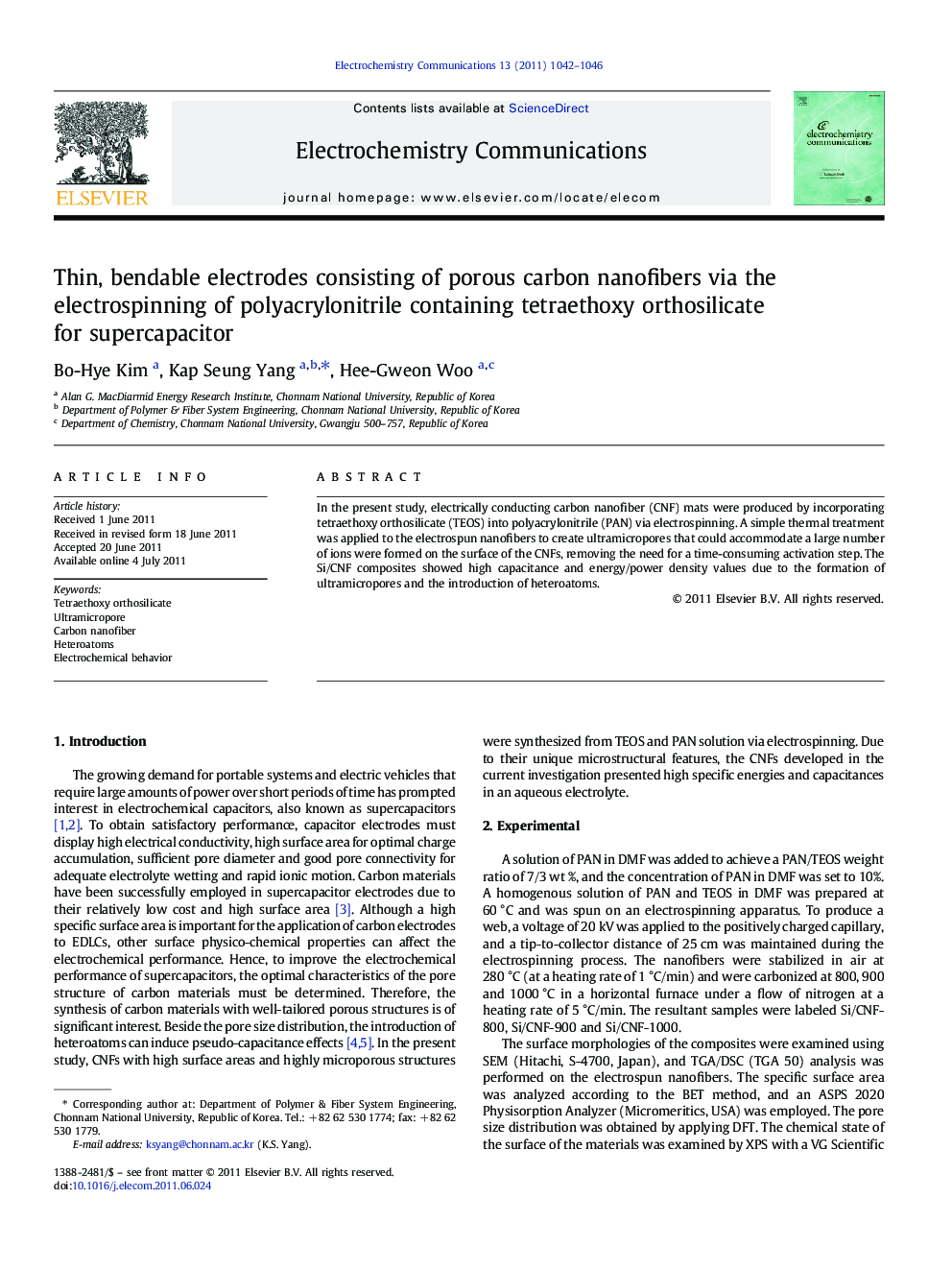| Article ID | Journal | Published Year | Pages | File Type |
|---|---|---|---|---|
| 180345 | Electrochemistry Communications | 2011 | 5 Pages |
In the present study, electrically conducting carbon nanofiber (CNF) mats were produced by incorporating tetraethoxy orthosilicate (TEOS) into polyacrylonitrile (PAN) via electrospinning. A simple thermal treatment was applied to the electrospun nanofibers to create ultramicropores that could accommodate a large number of ions were formed on the surface of the CNFs, removing the need for a time-consuming activation step. The Si/CNF composites showed high capacitance and energy/power density values due to the formation of ultramicropores and the introduction of heteroatoms.
Graphical abstractFigure optionsDownload full-size imageDownload as PowerPoint slideHighlights► Investigation of carbon nanofibers with high surface areas and microporous structures via electrospinning. ► Development of carbon nanofibers for electrodes performing efficient energy storage/conversion. ► Optimizing pore and morphology of carbon nanofibers for enhancing both power and energy densities of the electrochemical. capapcitors
